Stylish Gowns for Women: Trends, Styles, and Tips
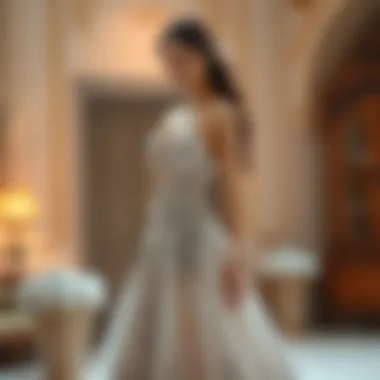
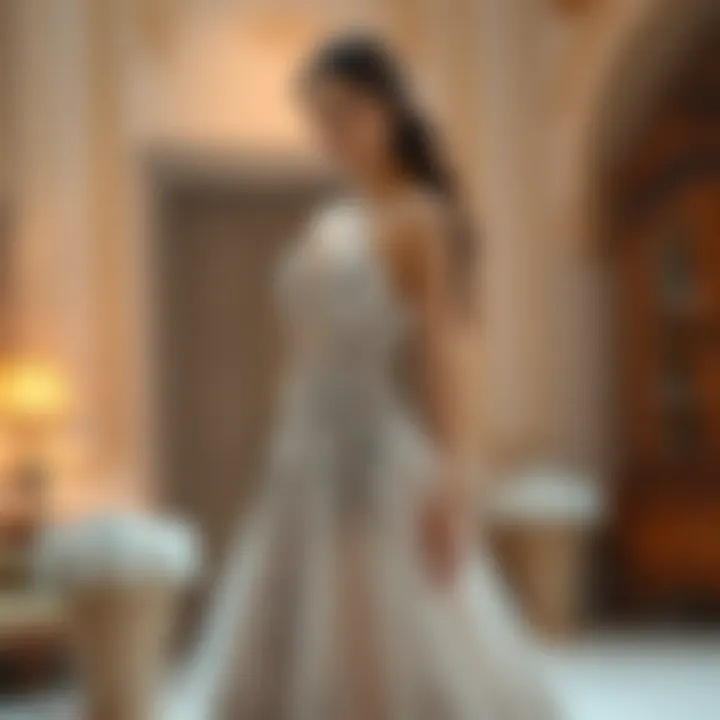
Intro
In the ever-evolving fashion landscape, gowns remain a timeless staple for women seeking elegance and style. Whether attending a regal gala or a casual brunch, a well-chosen gown can make all the difference. This guide aims to explore the enchanting world of gowns, unlocking insights about styles, fabrics, and accessories that can effortlessly elevate any look.
Understanding this multifaceted fashion item involves recognizing the latest trends and historical influences that shape our current sartorial choices.
Clothing Trends Analysis
Gowns have not only been a canvas for individual expression but also a reflection of societal changes. Over the years, fashion trends ebb and flow, unveiling new silhouettes and textures.
Current Trends in Seasonal Fashion
Today’s fashion scene is buzzing with innovation and sustainability. Here are a few key trends making waves this season:
- Sustainable Fabrics: Eco-friendly materials such as organic cotton and bamboo silk are gaining traction, appealing to environmentally conscious consumers.
- Bold Colors and Prints: Think striking jewel tones paired with vibrant florals or geometrical patterns that demand attention.
- Drape and Flow: Gowns are becoming more relaxed with an emphasis on draped detailing, allowing for movement and ease.
- Exaggerated Sleeves: Puff sleeves and ruffles are back, recalling a nostalgic vibe while still feeling modern.
These trends are not merely for show; they resonate with a broader cultural narrative that prioritizes sustainability and individualism.
Iconic Styles Through Decades
Examining past decades reveals how particular styles evolve while some remain classics. For instance:
- The 1920s Flapper Gown: Characterized by its straight cut and fringed designs, it represented women’s liberation and the joy of the Jazz Age.
- The 1950s Ball Gown: Marked by fitted bodices and voluminous skirts, it embodied femininity and glamour, making it a favorite for formal gatherings.
- The 1990s Slip Dress: Minimalistic and chic, this style has made a resurgence, often worn with layered tops and accessories to create modern aesthetics.
Fashion is cyclical; learning from the past can be instrumental in curating outfits that fit current times while staying true to one’s unique style.
Styling Tips and Techniques
To successfully wear a gown, it’s not solely about the gown itself, but how you style it. Here are some noteworthy considerations.
Essential Tips for Wardrobe Versatility
- Choose a Neutral Base: Opt for classic colors like black, navy, or beige that can be easily accessorized.
- Invest in Quality: Well-constructed gowns not only look better but also last longer, providing value over time.
- Layer Wisely: Light jackets or shawls can create dimension while adapting the gown for various weather.
Layering Techniques for Effortless Looks
- Belt It: A strategic belt can transform the silhouette, defining the waist and adding a chic element.
- Mix and Match: Pairing a gown with a casual tee or turtleneck underneath can create an effortless day look.
- Accessorize thoughtfully: The right jewelry and shoes can transition a gown from formal to casual settings seamlessly.
"Fashion is not just about what you wear, but how you wear it; it's the story you tell without speaking."
Culmination
Exploring gowns reveals a rich interplay of personal style and prevailing trends. By understanding both historical significance and modern adaptations, women can choose gowns that resonate with their character while being stylishly appropriate for various occasions. The perfect gown extends beyond fabric and stitching; it is an experience and a reflection of who you are.
Prelude to Gowns
Gowns hold a significant place in the wardrobes of women, transcending mere clothing to embody a sense of identity and occasion. They are not just fabric stitched together; they represent elegance, class, and often the culmination of a personal style statement. Understanding gowns is pivotal, especially for designers, stylists, and fashion students who seek to grasp the intricacies behind formal wear. This section aims to lay the groundwork for appreciating gowns in all their glory, diving into their definition and historical relevance.
Defining a Gown
A gown, in its essence, can be described as a long dress typically worn for formal occasions. However, the term carries a variety of interpretations based on context, culture, and current fashion trends. For instance, what is labeled as an evening gown might not fit the criteria for a cocktail dress. Gowns often feature intricate designs, luxurious fabrics, and an array of silhouettes that cater to body shapes and personal preferences.
"One woman’s evening gown is another’s cocktail dress, a testament to the versatility and subjective nature of style."
They can be characterized by their length—usually flowing past the knees and frequently creating a dramatic effect with their fabric and embellishments. The distinction between a gown and a dress is often blurred, with the former emphasizing formality and the latter being more casual. Attention to detail is paramount in gown design, as elements like neckline shape, train length, and embellishments significantly impact the gown's overall aesthetic.
Historical Context and Evolution
The history of gowns traces back centuries, rooted in tradition yet continuously evolving with society's whims. Originating from the flowing robes of ancient civilizations, gowns have transformed dramatically. For example, during the Renaissance period, sumptuous fabrics like silk and brocade were favored, displaying wealth and status among the elite. In stark contrast, the 1920s ushered in an era of flapper dresses, characterized by their shorter hemlines and looser fits—an embrace of freedom and femininity.
As we moved through decades, gowns reflected the shifting norms of each generation. The post-war years saw a return to more structured silhouettes designed by iconic couturiers like Christian Dior, which emphasized femininity through the "New Look". Fast forward to today, gowns can be found in a variety of styles from minimalist to extravagant, often influenced by cultural movements and celebrity trends. The advent of fashion technology has also spurred innovation—think of 3D-printed gowns, combining art and science in ways unimaginable a mere generation ago.
Thus, comprehending the historical context of gowns enriches one’s appreciation for them. They are not merely garments; they narrate stories of societal norms and individual expression, reminding us of the art and craftsmanship involved in fashion. With this foundation laid, we can explore the various types of gowns that adorn formal events and occasions, guiding readers through the choices that best suit their style.
Types of Gowns
The category of gowns encompasses a wide array of styles crafted for diverse occasions and aesthetics. Understanding the different types of gowns allows each wearer to express their individuality while also aligning their choice with the event at hand. Tailoring options to the specific situation—whether a grand gala or a laid-back brunch—enhances the overall experience of wearing a gown. This section explores the various types of gowns, highlighting their unique characteristics, suitability, and the nuances that make each style special.
Evening Gowns
Evening gowns are synonymous with elegance and sophistication. Often worn at formal events, these gowns typically feature luxurious fabrics and intricate designs, setting the stage for a memorable look. An evening gown can range from floor-length creations to more daring styles with high slits or open backs. The key to an impactful evening gown lies in its ability to make the wearer feel confident and beautiful.
When selecting an evening gown, considerations such as fit and proportion are vital. For example, A-line silhouettes flatter most body types, while fitted bodices can accentuate curves. Moreover, color and embellishment choices contribute significantly to the overall aesthetic and mood of the outfit. Rich jewel tones or deep shades often make a striking statement during evening events, while sequins or lace can add a touch of glamour.
Cocktail Dresses
Cocktail dresses strike a balance between formal elegance and relaxed versatility. These dresses are generally knee-length and suitable for semi-formal events, cocktail parties, and receptions. The styles vary, from flared skirts to tailored sheaths, allowing for personal expression while adhering to etiquette.
Wearing a cocktail dress often involves accessorizing wisely. Pairing it with the right heels and jewelry can elevate this stylish choice without overshadowing its charm. Additionally, fabric choices, such as silk or chiffon, contribute to the dress's overall vibe, making it easy to transition from day to night.
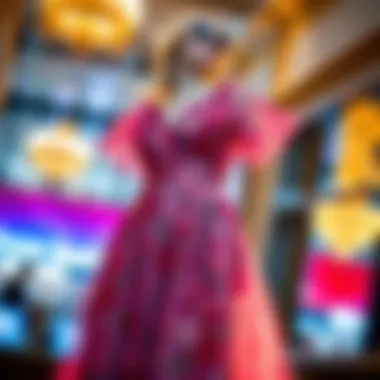
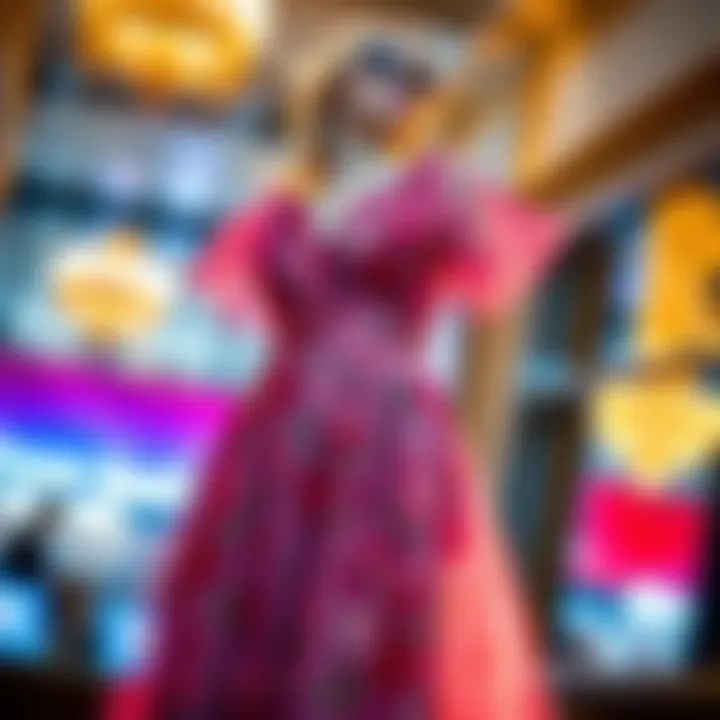
"A cocktail dress is like a blank canvas—it can be vibrant, subtle, daring, or classic, depending on how you accessorize it."
Ball Gowns
Ball gowns are the epitome of grandeur, traditionally reserved for formal balls and extravagant occasions. Characterized by their voluminous skirts and fitted bodices, these gowns often evoke a sense of fairy-tale elegance. The styles may include corsets and intricate detailing like embroidery or beading, enhancing the dramatic effect.
Choosing a ball gown requires attention to detail, particularly in terms of silhouette and fit. A well-constructed ball gown should complement the wearer’s figure, allowing for graceful movement. Selecting the right undergarments is equally significant; a bodysuit or supportive corset can dramatically affect the overall appearance and comfort.
Summer Dresses
In contrast to their more formal counterparts, summer dresses offer lightness and breeziness, perfect for warm days and casual gatherings. These dresses come in various styles, from sundresses to maxi dresses, often made from breathable fabrics such as cotton or linen. Their versatility allows them to be dressed up with accessories or kept simple for a laid-back look.
When selecting a summer dress, consider prints and patterns that reflect the season. Floral prints are particularly popular, while bold colors can evoke a sense of fun and vibrancy. The key is to find a dress that not only feels good but also resonates with the wearer’s personality and lifestyle.
Evening Jumpsuits
Evening jumpsuits, while not gowns in the traditional sense, have made quite an impact on the fashion scene. Combining comfort and style, they offer a chic alternative for those who prefer pants over dresses yet still want to look polished. With their tailored designs and often dramatic cuts, jumpsuits can be equally suitable for formal evenings out.
A jumpsuit can be versatile enough to transition between various occasions when complemented with the right accessories. From statement heels to elegant jewelry, the jumpsuit can be tailored to any setting while remaining distinct. This option encourages creativity in personal styling, making it a favorite among fashion-forward individuals.
In summary, understanding the various types of gowns and dresses is essential for any woman navigating the fashion landscape. Each type offers unique advantages and styling opportunities, allowing for an array of choices that can cater to personal taste as well as specific events. Embracing these options helps individuals not only to look their best but also to celebrate their unique beauty.
Choosing the Right Gown
Selecting the right gown is not merely a matter of aesthetics; it embodies an intricate blend of personal style, body type, and occasion, woven together with the subtle threads of fabric and color. Whether you're shopping for a formal event, a family wedding, or an intimate gathering, the importance of choosing a gown that flatters your figure and resonates with your personal expression cannot be overstated. Doing so elevates your confidence, allowing you to carry yourself with grace, poise, and an undeniable charm.
Understanding the nuances of gown selection aids not only in making a purchase but also enhances the wearer's overall experience. First off, it’s crucial to recognize how the right fit can shift an entire look from mere fabric draped over a body to an elegant statement of style.
Understanding Body Types
Every woman’s body is unique, and recognizing its nuances is vital in choosing a gown that looks as good as it feels. Different body types, often categorized broadly—like pear, apple, hourglass, or rectangle—come with their own set of challenges and strengths. When embarking on the quest for the perfect gown, one should aim to accentuate natural curves while providing comfortable support.
- Pear-shaped: Opt for dresses that draw attention to the upper body, like off-the-shoulder designs or embellishments at the neckline. A-line skirts work wonders for this shape, flattering hips while creating a balanced silhouette.
- Apple-shaped: Look for gowns that flow away from the midsection. Empire waist dresses can help create an illusion of a slimmer waist, with flowing fabrics gracefully cascading down.
- Hourglass: For those who fit this shape, fitted gowns that highlight the waist can enhance a naturally balanced figure. Styles with a cinched waist or wrap dresses will emphasize curves beautifully.
- Rectangle-shaped: Consider styles that create the illusion of curves, such as peplum gowns or dresses with ruffles that add volume to the hips and bust.
Overall, understanding one’s body type is key in selecting the right gown, as it leads to informed and guided choices that ignite confidence.
Size and Fit Considerations
A gown can only be as luxe as its fit. Striking the right balance between comfort and style is essential. Women often find themselves caught between two sizes, which can lead to a frustrating shopping experience. However, there are a few factors to keep in mind:
- Measurements: Proper measurements should be taken, ideally with the help of a skilled tailor. Knowing bust, waist, and hip sizes can guide the selection process.
- Style Variations: Sizes can differ dramatically between designers, so one might wear a size six from one brand and an eight from another. Embracing this variability can lead to successful finds.
- Flexibility in Fabric: Some fabrics yield to the body more than others. Stretch fabrics can create a more forgiving fit, while stiffer materials may require precision in sizing to avoid discomfort or awkward bunching.
A gown that fits well transforms the way it looks on the wearer. It fosters a streamlined presence that ensures comfort and flair.
Color Selection and Skin Tone
The world of colors is an expressive realm that can significantly affect one's appearance. When it comes to gowns, understanding what hues complement your skin tone is invaluable.
- Warm Skin Tones: Look for warm colors like earthy reds, oranges, yellows, and olive greens. Jewel tones such as warm emerald or rich gold can also be quite flattering.
- Cool Skin Tones: Opt for colors such as sapphire blues, emeralds, and cool-toned purples. Black and white, though classic, should also be examined through the lens of undertones. A pure white can be striking, but off-white may suit cooler tones better.
- Neutral Skin Tones: The world is your oyster! Most colors—be it the pastels or bolds—can work harmoniously, making it easy to play around and have fun.
In selecting a gown, remember that color can evoke emotions and thoughts. It’s an expression of personality. The right color should not just enhance the gown but also spark joy in the wearer.
"Selecting a gown is akin to crafting an identity; it's a thoughtful process which involves understanding the self as much as the fabric."
As you navigate through the options, keep these principles in mind. From body types and understanding fits to color choices, the path to finding that perfect gown becomes clearer, helping ladies not just wear a beautiful dress but embrace their own fabulousness.
Fabric Choices
Understanding fabric choices is crucial when selecting a gown. The type of material influences not just the look of the dress, but also its comfort and durability. Various fabrics can achieve different effects, making it important to consider not just aesthetic qualities but also how each fabric behaves in terms of movement and care. In this section, we delve into several specific fabric types commonly used in gown designs, looking at their unique properties and the contexts in which they excel.
Silks and Satins
Silk is often regarded as the gold standard in gown fabrics. It has a natural sheen and a luxurious texture that feels soft against the skin. The lightness of silk creates a flowy silhouette, moving beautifully with the wearer. Satin, often made from silk or synthetic fibers, offers a similar luster but tends to be heavier. Satin gowns often come into play for formal occasions where a regal appearance is desired.
When choosing silk or satin, it's important to think about maintenance. Both fabrics can require special care; silk, for example, may need dry cleaning to maintain its quality. On the other hand, satin can be more forgiving when it comes to stains, depending on the weave. Therefore, understand the nature of the event before opting for these stunning fabrics.
"The fabric can transform a basic gown into a masterpiece, influencing both style and comfort."
Cottons and Linens
Cotton and linen are other popular choices, particularly for casual or summer gowns. These fabrics are breathable, allowing air to circulate and keeping the wearer cool in higher temperatures. Cotton is versatile, often blended with other materials for added texture and durability. Linen, while more prone to wrinkling, exudes a relaxed charm that fits nicely into casual settings or beach weddings.
When selecting a cotton or linen gown, consider the weight of the fabric; lighter cottons are perfect for flowy summer dresses, while heavier options can lend structure to more tailored silhouettes.
Synthetic Fabrics
Synthetic fabrics, like polyester and nylon, have gained traction in the gown industry for their durability and affordability. They are often resistant to wrinkling and fading, making them appealing for travel-friendly options. Many designers have embraced synthetic materials because they can mimic the look of more expensive fabrics without breaking the bank.
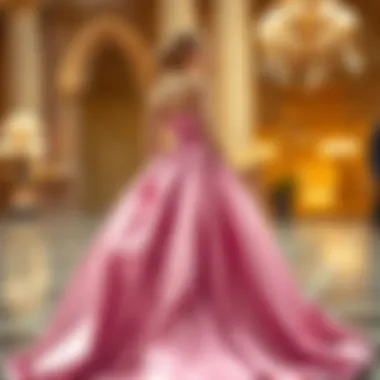
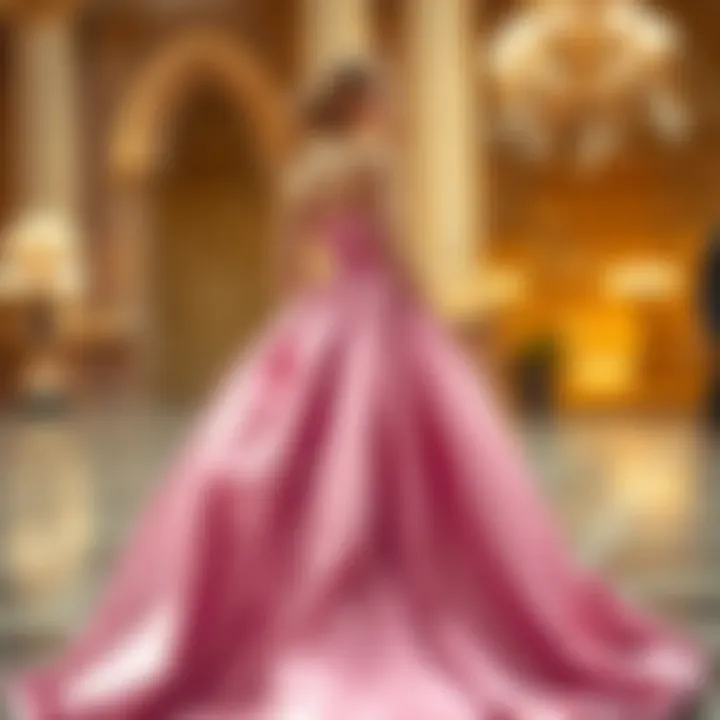
However, while these fabrics often fit nicely in terms of budget, it’s important to be aware that breathability may not be their strong suit. For outdoor events, it might be worth considering the climate before opting for a synthetic fabric.
Sustainable Materials
The movement toward sustainability is shaping fashion choices significantly. Fabrics like organic cotton, Tencel, and recycled polyester are leading the charge in eco-friendly gown selections. These materials aim to reduce environmental impact while still providing the look and feel that modern consumers desire.
Many designers are now prioritizing sustainable materials in their collections, recognizing that consumers are increasingly conscious of their environmental footprint. When opting for sustainable fabrics, it's not just about the feel of the gown; it's about the ethics of your choice. A gown made from sustainable material can also tell a story of responsibility and care for the planet.
Choosing the right fabric is more than just a practical consideration; it's about enhancing the overall design and statement of the gown. Each type of fabric comes with its own advantages and drawbacks, making it essential to think about the event, season, and personal style when making the final selection.
Accessorizing Gowns
Accessorizing a gown is more than just a side note in the world of fashion; it's the cherry on top that can transform a dress from ordinary to extraordinary. The right accessories do not only enhance the visual appeal but also allow for personal expression, reflecting one’s unique style. A gown, no matter how exquisite, can benefit immensely from well-chosen jewelry, shoes, and outerwear that complement its design and fabric. This part of the article will dissect these crucial elements, offering valuable insights for designers, stylists, and fashion students on how to carefully select accessories and refine the overall appearance.
Jewelry Choices
When it comes to accessorizing gowns, jewelry is often the first thing that springs to mind. The right pieces can highlight the gown's features or contrast beautifully to create a striking effect. For instance, a delicate chain can add elegance to a simple neckline, while bold statement earrings can draw attention upward, framing the face beautifully.
- Consider the Gown's Neckline: A plunging V-neck gown pairs well with a long pendant necklace, while a high-neck gown may look chic with stud earrings. Ovals, teardrops, or chandeliers — selecting shapes that accentuate the neckline will play a crucial role.
- Metal and Stone Coordination: Matching the metal of the jewelry with other accessories, like shoes or belts, ensures a cohesive look. Warm-toned gowns might call for gold accents, while cooler shades may harmonize better with silver or platinum.
Moreover, incorporating colored stones can add a splash of vibrancy against a solid gown, making a striking visual impact. Opting for gemstone colors that mirror the dress's palette or add a sharp contrast can be especially effective.
Footwear Pairing
Footwear is another linchpin when it comes to accessorizing a gown. The shoes learners so must complement the gown's overall silhouette and mood without overpowering it.
- Height Matters: High heels can elongate the legs and offer a touch of glam to evening gowns. However, if comfort is a priority, especially for longer events, elegant flats or kitten heels could be your best bet. It’s essential to feel at ease in your choice, as discomfort will show.
- Material Coordination: Pairing the shoe material with the gown fabric contributes to a polished look. For silk satin gowns, a pair of satin pumps might create harmony, while a tulle gown could be well-matched with elegant strappy sandals.
- Seasonal Considerations: In winter, closed-toe options might prove necessary, while spring and summer may allow for open styles. Always think about the occasion and the practicality of your choice.
Consider this: though it might seem trivial, a stunning pair of shoes can save a gown that doesn’t fit well if they are just right.
Outerwear Options
Finally, as the temperatures dip or weather turns, adding layers is essential. Outerwear does not simply serve a functional role; it can also elevate a gown's appeal. The right coat, wrap, or jacket can enhance the overall aesthetic and provide warmth at evening events.
- Classic Vs. Trendy: A structured blazer can instill a chic vibe to a flowing gown, while a fitted leather jacket can impose an edgy touch. When opting for a classic look, a tailored coat in a neutral shade can work wonders, whereas a colorful shawl can bring a playful twist.
- Complimentary Fabrics: Just like with shoes, the outerwear fabric must complement the gown. For instance, a velvet evening gown can look stunning with a matching velvet cape, whereas a light chiffon dress can pair nicely with a soft, knitted cardigan for outdoor events.
Accessorizing is an art. Understanding each layer, from the earrings dangling down to the shoes stepping forward, can create an elegant, dazzling look, whether for a glamorous gala or a casual gathering.
"The key to mastering accessories is not to overshadow the gown, but to enhance it, letting each piece speak its own language in harmony with the whole ensemble."
As you prepare to adorn your gowns with accessories, remember these considerations. Accessorizing can make or break an outfit, and subtle choices can lead to stunning results.
Seasonal Trends
Understanding seasonal trends is crucial when diving into the world of gowns, as these trends significantly influence design choices, fabric selections, and style adaptations. Gowns are not merely garments; they serve as a representation of the environment and culture of their time. Paying attention to seasonal trends helps both designers and wearers align their choices with what is current and relevant, allowing for a more informed and stylish wardrobe.
When considering seasonal trends, it’s not just about the general aesthetics. It’s also about practicality, comfort, and the layering possibilities that each season presents. The right gown can provide elegance and warmth in colder months, while offering breathability and flair in hotter seasons. Being aware of these trends can lead to informed purchases, maximizing the functionality and versatility of the wardrobe.
Spring and Summer Styles
As the flowers bloom and the sun shines brighter, spring and summer gowns emerge in the fashion scene, typically characterized by lighter fabrics and vibrant colors. This time of year invites creativity, often reflecting the freshness of nature. Popular choices usually include:
- Florals: Soft, floral prints become staples, celebrating the season’s essence.
- Pastels: Light pastel shades are often favored, as they evoke a sense of calm and renewal.
- Flowy Silhouettes: Designs tend to favor flowy cuts and lighter materials like chiffon and cotton blends, allowing for ease of movement while staying chic.
It's not just about looking good; the right gown for these warmer months can keep one comfortable and feeling fresh. A good example would be a floral maxi dress paired with strappy sandals, allowing an easy transition from a picnic in the park to dinner by the seaside.
Fall and Winter Adaptations
As the leaves change and the temperature drops, gowns begin to adapt to the changing environment. Fall and winter styles often incorporate richer fabrics and deeper hues. Here, one can see:
- Velvets and Heavy Silks: These fabrics provide warmth while still offering a luxurious feel. Velvet gowns, for instance, are perfect for holiday gatherings or elegant evenings.
- Layering: Gowns designed for colder months often allow for layering. A gown with a fitted bodice paired with a stylish shawl or tailored blazer can give a polished look while keeping warmth in mind.
- Dark Colors: Earth tones, deep greens, and burgundy dominate the scene during these seasons, providing a vivid contrast to the natural world outside.
These seasonal adaptations demonstrate the gown's versatility and how it can transform to meet the requirements of each season, ensuring that fashion remains functional and stylish at once.
"Fashion is not something that exists in dresses only. Fashion is in the sky, in the street, fashion has to do with ideas, the way we live, what is happening." – Coco Chanel
Being attuned to seasonal trends not only enhances one’s personal style but also empowers creators and consumers alike to make choices that are not only trendy but also suitable for the time of year.
Occasions for Gown Wear
When it comes to gowns, understanding the appropriate occasions for wearing them is crucial. This section shines light on why selecting the right gown for a specific event not only boosts self-confidence but also enhances the overall experience of the occasion. Gowns are more than just pieces of clothing; they symbolize elegance and sophistication. Their relevance extends beyond personal style—each event has its own vibe and culture that a gown can complement, making the choice of gown an important aspect in upholding the decorum of the occasion.
Weddings and Formal Events
Weddings are often the pinnacle of gown wearing moments. Whether you’re the bride herself or a guest, a gown can reflect the significance of the day. For brides, choosing the right wedding dress is not just about aesthetics; it’s about the narrative it tells. Every lace detail or silk drape can whisper tales of love and commitment. Guests too need to think about the event setting—an elegant evening wedding may call for floor-length gowns with sophisticated embellishments.
Remember: Selecting a gown that resonates with the wedding's theme can elevate your look manifold.
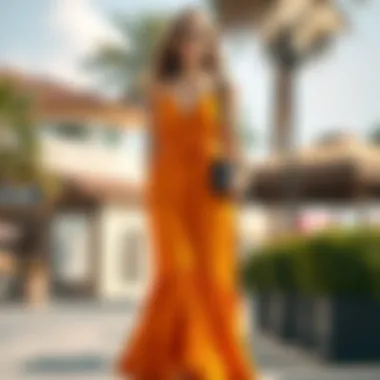
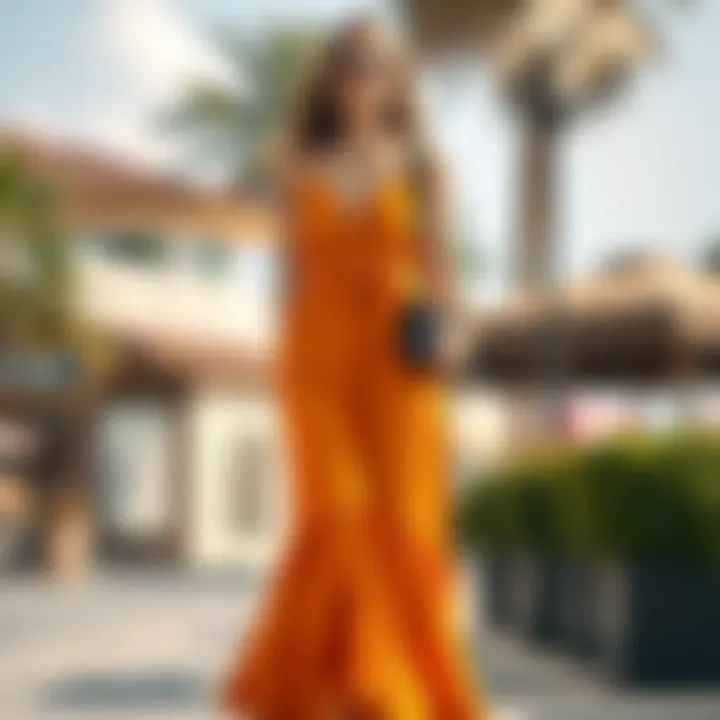
Prom and Graduation Ceremonies
Prom night marks a rite of passage, often infused with excitement and anticipation. Here, gowns transform into symbols of youth and freedom. Teenagers might opt for styles that reflect their personalities—from whimsical tulle to sleek satin cuts. The key is to find something that makes one feel both comfortable and confident on this memorable night. Similarly, graduation ceremonies call for a different elegance. A gown for this occasion can be a blend of formality and personal style, honoring both achievement and individuality.
Theater and Gala Invitations
The allure of a theater or gala lies in its grandeur. Here, gowns have the ability to stand out and make a statement. Attending such events often means donning extravagant styles that capture the eyes of onlookers. When choosing a gown for a gala, consider rich fabrics, bold colors, and unique silhouettes. An evening can be transformed when the right gown is paired with the right confidence and poise.
Casual Gatherings
Not all gatherings demand a full-on formal gown. Casual events can still embrace the gown trend, allowing room for creative adaptations of style. Imagine a family picnic where a flowy maxi gown reflects both comfort and chicness. These occasions also permit playful prints and vibrant colors, making it essential to balance casual with fashionable. A gown doesn’t always need to be overly intricate; even simpler designs can convey effortless style while allowing one to move freely.
Cultural Perspectives on Gowns
Understanding the cultural influences and perspectives on gowns enriches our appreciation for this garment. Gowns are not merely pieces of clothing; they embody traditions, social status, and even significant historical narratives across different societies. When discussing gowns, it's important to consider how diverse cultures have shaped their styles, materials, and significance. This exploration sheds light on how these symbolic garments reflect the values and sentiments of various cultures.
Gowns can bridge gaps between generations, often passed down as heirlooms, representing family heritage and cultural narratives. In today’s globalized fashion landscape, it’s crucial to recognize and respect these origins while embracing modern interpretations. The blending of traditional elements with contemporary aesthetics frequently results in a vibrant dialogue within the fashion world, where classic techniques meet modern needs.
Traditional Gowns Around the World
Every culture boasts traditional gowns that convey its unique identity. For example, in India, the saree, a long piece of cloth draped elegantly around the body, represents grace and tradition, often adorned with intricate embroidery and vibrant colors. Meanwhile, in Japan, the kimono stands as a symbol of elegance and craftsmanship, featuring elaborate patterns and rich fabrics, often associated with formal occasions.
In Africa, various countries exhibit their unique textiles, such as the ankara or kente cloth, used to create stunning gowns and outfits rich in symbolism and history. For instance, the Ghanaian kente cloth not only has beautiful designs but also tells a story of the weaver and the community's identity.
One cannot forget the dirndl in Bavaria, Germany, characterized by its fitted bodice and full skirt, often worn during Oktoberfest. Each piece tells a tale, not just of fashion, but of community rituals and historical contexts.
"A gown isn't just fabric; it’s a wearable history, a statement about its wearer, and a reminder of roots and stories that span generations."
Modern Interpretations and Fusion Styles
With globalization and the intermingling of cultures, modern interpretations of traditional gowns have emerged prominently. Fashion designers now blend elements from various cultures, creating fusion styles that resonate with today's aesthetic sensibilities. For instance, many Western bridal designers are incorporating Asian lace and embroidery techniques, taking inspiration from gowns like the Vietnamese ao dai or the Indian lehenga.
In urban centers, fashion shows regularly showcase these hybrid designs. Some may wear a traditional African jacket paired with a contemporary skirt, creating a striking juxtaposition of cultures. Such fusion styles often challenge conventional notions of what a gown should represent, making space for personal expression and identity.
The dynamism of fashion allows such cross-cultural pollination, leading to innovative designs that remain respectful of their origins. These modern gowns often adopt colors, patterns, and silhouettes that are radically different from the traditional designs, yet they pay homage to their roots in subtle, impactful ways.
Overall, cultural perspectives on gowns offer a profound lens through which fashion can be understood, appreciated, and celebrated. Designers and stylists now view these garments not just in terms of aesthetics, but as pieces of art that carry the weight of history and memory. The interplay of traditional and modern styles in gowns is an exciting evolution that reflects the continuously shifting landscape of global fashion.
Fashion Trends and Influences
The fashion landscape is an ever-shifting panorama, with trends that ebb and flow like the tides. For anyone involved in the world of gowns, understanding these trends is paramount. Not only do trends unveil the current aesthetic preferences of society, but they also bear the weight of cultural shifts, technological advancements, and the collective psyche of the public. This section dives into how these elements shape what’s hot and what’s not in gown fashion.
Iconic Styles Over Decades
Fashion is akin to a circle; styles that were once the crème de la crème often ebb back into popularity. Think back to the flapper dresses of the Roaring Twenties or the voluminous silhouettes of the 1980s. These iconic styles don’t just reflect the tastes of their time—they resonate with cultural movements.
- The 1920s: This era revolutionized women’s fashion with its liberated approach. The drop-waist gown, decked in beads and fringe, became a symbol of a generation seeking freedom.
- The 1950s: Christian Dior introduced the New Look, a silhouette featuring a cinched waist and full skirt that returned femininity to the forefront of style.
- The 1980s: Known for extravagant extravagance, gowns during this period featured bold colors, puffed sleeves, and exaggerated shapes, embodying the decade’s love for excess.
- Today’s Trends: Fast forward to the present, and we see a mélange of styles—think simple slip dresses or the reintroduction of elements from past decades, tailored to contemporary aesthetics.
Each decade’s influence is a testament to the cyclical nature of fashion. It invites designers to draw inspiration from history, knitting together past and present.
Celebrity Influence and Red Carpet Moments
In the realm of gowns, celebrities serve as the torchbearers of style, igniting trends with each public appearance. The red carpet isn’t just a glitzy affair; it’s where design and drama collide, making it a pivotal force in shaping fashion trends. Consider just a few significant instances:
- Audrey Hepburn in Givenchy: In Breakfast at Tiffany's, Hepburn’s timeless black gown became an enduring symbol of class and sophistication, influencing generations of evening wear.
- Princess Diana’s Revenge Dress: This shocking little black dress worn after Prince Charles's admissions pushed boundaries and forever changed the perception of royal attire.
- Zendaya’s Bold Looks: Today’s youth are captivated by Zendaya’s fearless fashion choices. Her ability to blend high fashion with cultural references speaks volumes about the current landscape.
“Fashion is a way to say who you are without having to speak.” —Rachel Zoe
Each appearance on the red carpet isn’t just a showcase of designer gowns, it’s a conversation about identity, style, and rebellion. As these influences ripple through the fashion lake, they affect not only what consumers desire but also how designers create.
In sum, understanding fashion trends and influences is essential for anyone seeking to navigate the complex world of stylish gowns. By acknowledging past styles and the current celebrity impact, one can better predict future choices in this ever-evolving domain.
Ending
Understanding the world of gowns goes beyond mere aesthetics; it delves into the realms of personal expression and cultural significance. This article aims to unravel the intricate layers that form the basis of stylish gowns for women, shedding light on essential elements and considerations that every individual should ponder when seeking the perfect attire for various occasions.
Embracing Individual Style
Every gown tells a story, and each woman has her own narrative to share through her fashion choices. Embracing individual style is paramount in the realm of gowns. It allows women to reflect their personalities, celebrate their backgrounds, and navigate through diverse cultural influences. A gown is not just a piece of clothing; it's a canvas to express emotions, experiences, and aspirations.
When selecting a gown, consider how it resonates with your identity. Whether you lean towards vintage silhouettes or modern cuts, prioritize garments that evoke confidence and comfort. Style is subjective. It’s about personal taste, but also about what makes you feel fierce. For some, this means extravagant designs adorned with embellishments; for others, it might be understated elegance in a minimalist gown. Remember, the goal is not to blend in, but to stand out in a crowd with a style that symbolizes you.
The Future of Gowns in Fashion
The fashion industry is in a constant state of flux, and gowns are very much at the forefront of evolving trends. As we look forward, several dynamics will shape the future of gown designs. Firstly, there is an increasing focus on sustainability. As awareness grows about environmental concerns, designers are expected to innovate by utilizing eco-friendly materials and methods.
In addition, the rise of technology in fashion, including 3D printing and virtual fittings, may redefine how gowns are created and purchased. This opens doors to customization like never before, allowing each gown to be uniquely tailored to fit the individual needs of a customer.
Cultural influences will also play a noteworthy role. Gowns are reflecting a fusion of styles, embracing global designs while catering to local tastes. The boundaries of traditional fashion are blurred as women search for pieces that signify diversity and inclusivity. This next chapter in gown fashion signals not only aesthetic transformations but also a powerful shift towards a more open-minded society.
"Fashion is what you adopt when you don’t know who you are; style is what you create, when you do."
As the landscape continues to change, the gown will remain a timeless staple, merging tradition with innovation.







